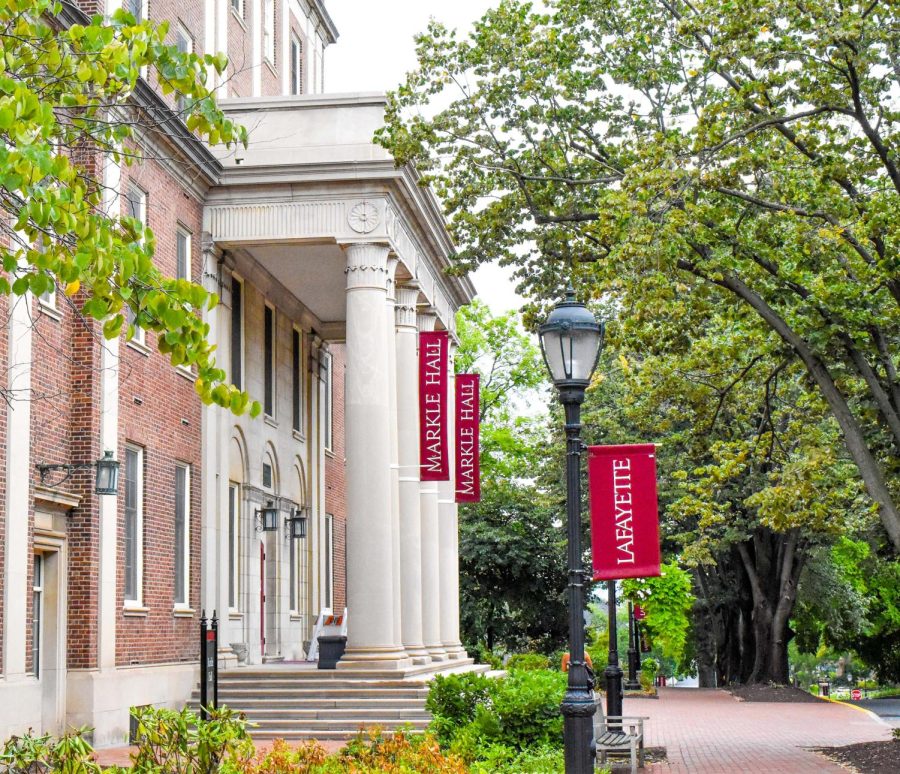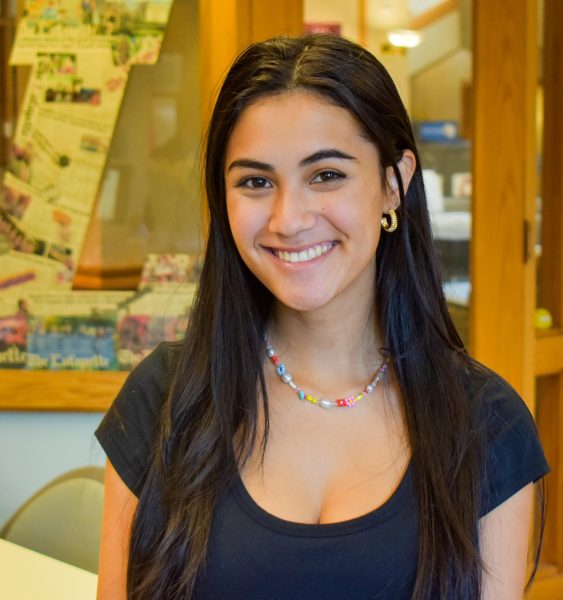At 761 strong, Lafayette’s current freshman class rivals that of yesteryear as one of the largest ever. While students are excited to join the Lafayette family, the sheer size of the class is proving stressful; from large First Year Seminar (FYS) classes to a great number of freshman triples, the college’s capacities are again being stretched.
The Lafayette enrollment office, using past data and current research, planned their acceptance numbers based on models that predicted a final yield of 725 students. However, after more students than anticipated accepted their offers of admission, it became clear that the class of 2026 would be unexpectedly large.
“All our models said if we admitted this many students, we would get to 725,” Lafayette President Nicole Hurd said. “We went with the models and actually got us to 800. It wasn’t that we upped the enrollment. We were aiming for 725 … We had more people say ‘yes’ then we maybe had projected with our [models].”
According to Justin Corvino, professor of mathematics and chair of the Enrollment Planning Committee, those involved with enrollment never planned to stray from the 725 goal.
“The aspiration was set at 725 early and it never budged really,” Corvino said.
There are varying explanations for the discrepancy between the projected and actual numbers. Interim Dean of Admissions Kathleen Williams said that while the models are based off of past numbers, they did not account for the human connection that makes Lafayette stand out to prospective students.
“You cannot underestimate at a place like Lafayette, the human connection, the community, the outreach. And so students get to know us and they get to know their admissions person,” Williams said. “I think that we are in a very enviable position, even though it is certainly causing some stressors on the campus. But it’s the human connection that you can’t account for in data.”
However, History Professor Joshua Sanborn and Hurd agree that the COVID-19 pandemic may have had a significant effect on the accuracy of the models.
“The pandemic has changed student decision-making and family decision-making, and modern models are based on past behavior, so it would not surprise me to learn that models are very different in the post-pandemic world,” Sanborn said.
“We’ve got some great historical data, but most of our historical data has been very hard to kind of bank on given what happened with Covid,” Hurd said. “Coming out of Covid, student application behaviors are still a little bit unpredictable.”
With a 2025 freshman class of 782 students, many professors last year expressed concern over the effect that such a large increase in student population would have on the campus. However, Williams emphasized that last year’s over-enrollment was purposeful, after a much smaller 2024 class.
“The year before was much more intentional because we were so much lighter after 2020,” Williams said. “The class of 2024 was 606, so last year, bringing in a bigger class was far more intentional.”
One of the major effects of the over-enrollment is larger class sizes, specifically in FYS classes. The majority of Seminars this year are around 18 students, despite them being capped at 16 only a few years ago. Many professors noted their disappointment with this increase in size, as it may affect the quality of the class.
“A couple of years ago [FYS classes were] capped at 16 [students],” Chemistry Professor David Husic, who teaches the FYS Appalachia, said. “Occasionally you get one extra if they needed it desperately.”
Anthropology and Sociology Professor William Bissell, who teaches the FYS Global Food, said that there are three main objectives of the Seminars: teaching a niche discipline, giving freshmen their first introduction to college research and allowing them to refine and edit significant pieces of writing.
However, with larger class sizes, Bissell said that these objectives may be more difficult.
“If you’re going to be working on writing, you need to have a lot of one-on-one attention from a professor or from interlocutors, from mentors that are kind of closely working through what you’ve produced and then allowing you to kind of reflect on it and revise and improve,” Bissell said. “The other thing that I think is really important is that it should be a seminar-style atmosphere where you’re not feeling like you’re one body in a 200-person classroom.”
Husic agreed that a class size of 18 is larger than ideal, and it is more difficult to arrange trips for his FYS with bigger class sizes.
“I would think an ideal situation … would be somewhere between 12 and 16,” Husic said. “Anytime you can have a smaller class, the better it is, regardless of what discipline it is whether it be the First Year Seminar or a chemistry class.”
With professors having to spend individual time with more students, Sanborn said that professors would also develop issues with their ability to do their own research or assist students with theirs.
“That maybe means that a professor doesn’t have the time to do an independent study or to do an honors thesis, the kinds of things that most students come here expecting and wanting to do to have that individualized learning experience,” Sanborn said. “The more pressure you put on faculty and the other aspects of their jobs, the less opportunity there is for those kinds of things.”
While Hurd said that the administration is not planning on continuing growth, she did add that it is a better problem to have than the reverse.
“The two things that get me excited is that we had a bunch of really great students … say, ‘I want to come here.’ The other thing that gets me excited is that there are plenty of colleges out there that are under-enrolling right now so we’re actually in an incredibly strong and enviable position,” Hurd said. “That being said, I realize it’s a bigger class and we have to keep an eye on class sizes and we have to keep an eye on how many triples we have and we have to keep an eye on delivering the kind of educational experience that we want to deliver.”
Williams said that while the over-enrollment may be stressful for many administrators and faculty, she found that everybody has been overwhelmingly cooperative.
“Everybody’s working really hard to be great partners to support the students,” Williams said. “We all want to make this a great student experience. We want that to be a constant. And I think the word might be out that we’re pretty good at it.”






































































































